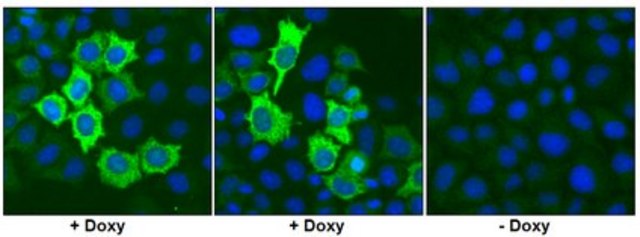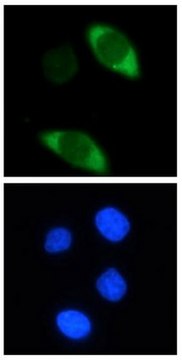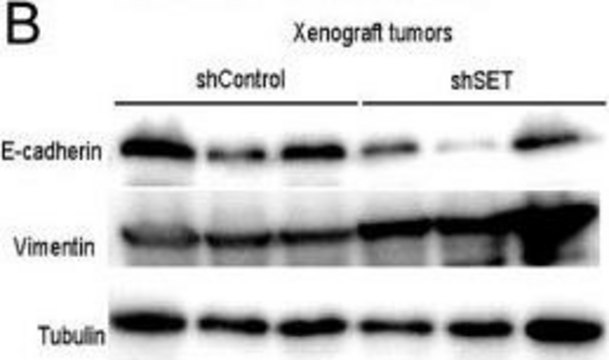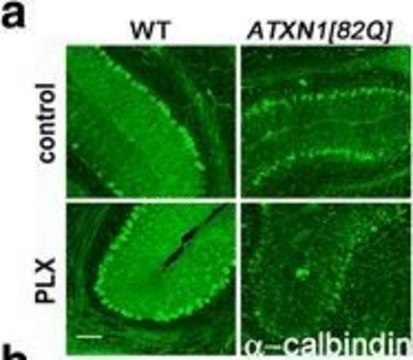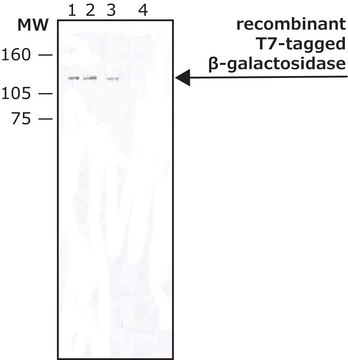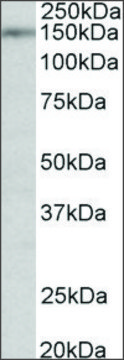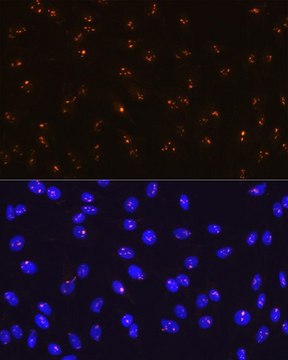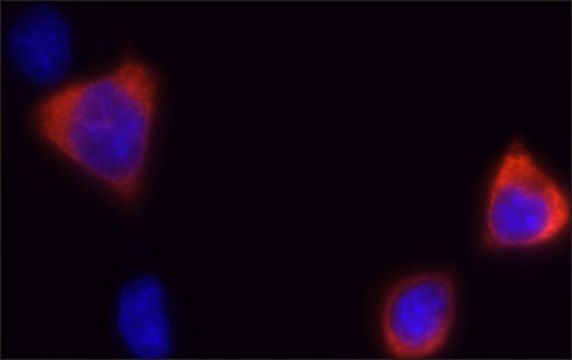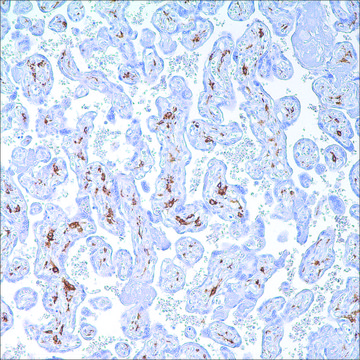推荐产品
一般描述
CRISPR-associated endonuclease Cas9 (UniProt: J7RUA5; also known as SaCas9, Cas9) is encoded by the Cas9 gene in Streptococcus aureus. Cas9 belongs to subtype II-A subfamily with one HNH Cas9-type domain. CRISPR (clustered regularly interspaced short palindromic repeat) is an adaptive immune system that provides protection against mobile genetic elements (viruses, transposable elements and conjugative plasmids). CRISPR clusters contain spacers, sequences complementary to antecedent mobile elements, and target invading nucleic acids. Cas9 has a bilobed architecture with a recognition lobe (residues 41-425) and a discontinuous nuclease lobe (NUC, residues 1-40 and 453-1053); the crRNA-target DNA lies in a channel between the 2 lobes. The NUC lobe has 2 endonuclease domains. The discontinuous RuvC-like domain in NUC cleaves the target DNA non-complementary to crRNA while the HNH nuclease domain cleaves the target DNA complementary to crRNA. Cas9 serves as a RNA-guided DNA endonuclease that cleaves double-stranded DNA targets with a protospacer adjacent motif (PAM) and complementarity to the guide RNA. The homologous region of the Streptococcus aureus is not closely related in amino acid sequence in S. aureus, hence this antibody does not recognize that protein.
特异性
Clone 6F7 specifically detects Cas9 in Staphylococcus aureus. It does not recognize Cas9 in Streptococcus pyogenes.
免疫原
A recombinant fragement corresponding to 251 amino acids from the C-terminal region of Staphylococcus aureus. Expressed in and purified from E. coli.
应用
Anti-Cas9, clone 6F7, Cat. No. MAB131872, is a highly specific mouse monoclonal antibody that targets CRISPR-associated endonuclease Cas9 and has been tested in Immunocytochemistry and Western Blotting.
Immunocytochemistry Analysis: A 1:1,000 dilution from a representative lot detected Cas9 in HEK293 cells which overexpress fusion protein containing GFP and C-terminus of Cas9 from S. aureus (Courtesy of Dr Gerry Shaw).
Western Blotting Analysis: A representative lot detected Cas9 in HEK293 overexpressing fusion protein containing GFP and C-terminus of Cas9 from S. aureus (Courtesy of Dr Gerry Shaw).
Western Blotting Analysis: A representative lot detected Cas9 in HEK293 overexpressing fusion protein containing GFP and C-terminus of Cas9 from S. aureus (Courtesy of Dr Gerry Shaw).
质量
Evaluated by Western Blotting in HEK293 cell lysates overexpressing a fusion protein containing GFP and C-terminus of Cas9 from Staphylococcus aureus.
Western Blotting Analysis: A 1:1,000 dilution of this antibody detected Cas9 in 10 µg of HEK293 cell lysates overexpressing a fusion protein containing GFP and c-terminus of Cas9 from Staphylococcus aureus.
Western Blotting Analysis: A 1:1,000 dilution of this antibody detected Cas9 in 10 µg of HEK293 cell lysates overexpressing a fusion protein containing GFP and c-terminus of Cas9 from Staphylococcus aureus.
目标描述
~53 kDa observed (truncated form). Uncharacterized bands may be observed in some lysate(s).
外形
Format: Purified
Purified mouse monoclonal antibody IgG1 in PBS with 0.03% sodium azide and 50% glycerol.
其他说明
Concentration: Please refer to lot specific datasheet.
未找到合适的产品?
试试我们的产品选型工具.
储存分类代码
10 - Combustible liquids
WGK
WGK 2
法规信息
新产品
Pin Lyu et al.
Nucleic acids research, 47(17), e99-e99 (2019-07-13)
Transient expression of the CRISPR/Cas9 machinery will not only reduce risks of mutagenesis from off-target activities, but also decrease possible immune response to Cas9 protein. Building on our recent developing of a system able to package up to 100 copies
Baisong Lu et al.
Nucleic acids research, 47(8), e44-e44 (2019-02-14)
The clustered regularly interspaced short palindromic repeats (CRISPR)/CRISPR-associated (Cas) system discovered using bacteria has been repurposed for genome editing in human cells. Transient expression of the editor proteins (e.g. Cas9 protein) is desirable to reduce the risk of mutagenesis from
Xingang Yao et al.
Journal of extracellular vesicles, 10(5), e12076-e12076 (2021-03-23)
Transient delivery of CRISPR-based genome editing effectors is important to reduce off-target effects and immune responses. Recently extracellular vesicles (EVs) have been explored for Cas9 ribonucleoprotein (RNP) delivery. However, lack of mechanisms to enrich RNPs into EVs limited the efficiency
我们的科学家团队拥有各种研究领域经验,包括生命科学、材料科学、化学合成、色谱、分析及许多其他领域.
联系技术服务部门